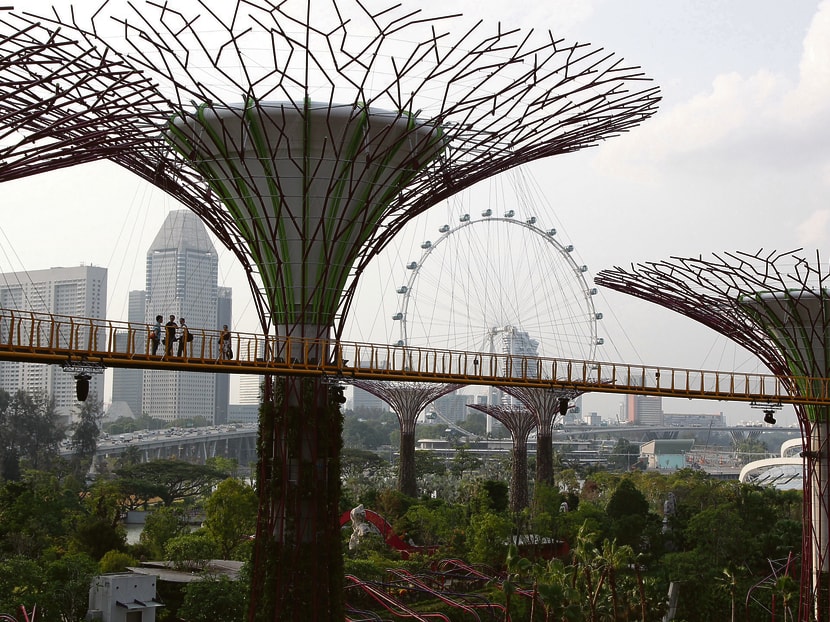Scrapping of underground road network to give more urban planning options: Experts
SINGAPORE — Scrapping plans to build a 30km underground road network will not only give urban planners and landowners more flexibility to build “higher or lower”. It will also reduce the inconvenience and costs for developers since they will no longer have to take the network alignment into consideration in their planning, property and transport experts said on Tuesday (Aug 29).

Mr Nicholas Mak, executive director of real estate firm ZACD group, said significant stretches of alignment run beneath lands with no development potential, such as the Central Expressway or the Marina Coastal Expressway or the Gardens by the Bay. TODAY file photo
SINGAPORE — Scrapping plans to build a 30km underground road network will not only give urban planners and landowners more flexibility to build “higher or lower”. It will also reduce the inconvenience and costs for developers since they will no longer have to take the network alignment into consideration in their planning, property and transport experts said on Tuesday (Aug 29).
Still, the impact of the Government’s decision to “de-safeguard” land preserved for the 30km-Singapore Underground Road System (SURS) will not be felt immediately, they told TODAY.
Noting that the announcement on the SURS’ fate is “no windfall for anybody”, Mr Colin Tan, director of research and consultancy at Suntec Real Estate Consultants, said that the lifting of restrictions means that urban planners can designate areas to have a “higher plot ratio”, which refers to the density of a building on any piece of land.
“There are more options to relocate or locate some amenities and developments. If you want to intensify or build higher, then this will allow the planners to lift the plot ratio,” he added.
In the long term, Mr Tan felt the move opens up the potential to develop the northern side of the SURS’ loop — namely the parts running across Balestier Road and Kallang — the only areas left that are not as densely built up as the city centre, or running along the existing arterial road network.
International Property Advisor chief executive officer Ku Swee Yong said the restrictions under the SURS affected a very niche group of landowners, who might be thinking of creating a subterranean structure or high-rise condominiums which might require more piling work for foundation.
He added that if the Government had gone ahead with the S$5 billion SURS plan, “about 30 to 40 per cent of the built-up areas, such as Havelock, Maxwell and Orchard” will have to put up with the inconveniences arising from the construction.
“There is no financial impact, except that we save some trouble for ourselves,” Mr Ku added.
Mr Nicholas Mak, executive director of real estate firm ZACD Group, said significant stretches of alignment run beneath lands with no development potential, such as the Central Expressway or the Marina Coastal Expressway or the Gardens by the Bay. Hence, there is limited impact on property developers.
He added that it is “incrementally more expensive to build deeper down”, with the price for going two to three levels underground costing about three times more.
“You will need more foundation work, more robust engineering work to keep the walls from collapsing on the sides as there is more pressure there,” Mr Mak added.
Transport experts felt that it was a wise move to scrap the underground road network as it was an obsolete idea conceived in the 1980s, at a time when plans for the country’s MRT network was still at its infancy.
The provisions made for the underground roads were also “too extensive” to be adapted for alternative uses, such as building pedestrian walkways or underground shopping malls to further support the car-lite vision, they noted.
"For me, de-safeguarding could have happened earlier. The moment they have planned for more MRT lines, then it becomes quite clear that we do not need to have those car roads tunneling through underground,” said Singapore University of Social Sciences (SUSS) urban transport planner Park Byung Joon.
When asked whether the planned underground network could be adapted to fit the car-lite vision — for example, using it for cycling paths — Dr Park said that standards are vastly different when it comes to planning for different types of amenities. For example, the total walking distance for an underground pedestrian walk could only go no more than 2km — “this is what driving can cover in one to two minutes”.
While recognising the importance of “unlocking the value of the land along the corridor if the Government does not intend to use it”, SUSS economist Dr Walter Theseira felt that the authorities could have taken a more phased approach in “de-safeguarding” the land meant for SURS.
Pointing to the vision of having more autonomous vehicles on the roads in the future, Dr Theseira said the “heavy adoption” of this might increase road-usage in the prime areas as it could make this form of commuting “more convenient than taking mass public transport”.
Since the short-term impact of “de-safeguarding” is limited, the move could result in “us restricting ourselves unnecessarily”, Dr Theseira said.








